November 28, 2017
Sugar Cookies Are a Handful of Goodness
Whether you are baking for guests or Santa, the buttery refinement of the sugar cookie can’t be beat!
Lore has it that the first sugar cookies appeared around the seventh century. It is possible that a baker around that time used mini versions of his cakes to test the temperature of his oven. When he began selling these mini-cakes, the sugar cookie was born!
The type of sugar used makes a difference in the texture of the finished cookie. Fine sugar granules will make a cookie that is flatter and crisper. Large sugar granules result in a thicker, chewier cookie. This is because the dissolving of the sugar causes the dough to spread. If the sugar is coarser, it will dissolve more slowly.
Our recipe makes about 4 dozen soft and scrumptious cookies. One way to make them uniquely yours is to use a cookie stamp. The die blocks transfer patterns to the cookies that you can then decorate with food paints and sprinkles. Enjoy!
 Buckhorn Inn Sugar Cookies
Buckhorn Inn Sugar Cookies
1 cup Butter, softened
1 cup Vegetable Oil
2 large Eggs
1 cup Granulated Sugar
1 cup Confectioner’s Sugar
2 teaspoons Vanilla
4 ¼ cups All-Purpose Flour
½ teaspoon Salt
1 teaspoon Baking Soda
1 teaspoon Cream of Tartar
½ cup additional Granulated Sugar for rolling
Preheat oven to 350 degrees.
Cream butter, oil, eggs, sugars and vanilla. In a separate bowl combine flour, salt, baking soda, and cream of tartar. Add the flour mixture to the creamed mixture. Form into 1 inch balls and roll in granulated sugar. Place the cookies on an ungreased cookie sheet and flatten. Bake 10 to 12 minutes until light, golden brown. Let the cookies cool on the cookie sheet for 2 minutes before placing them on a cooling rack.
Holly is a Seasonal Favorite at Buckhorn Inn
Have you admired the holly bushes on the Buckhorn Inn Nature Trail? We have two American specimens of this beautiful evergreen.
The thick, spiny leaves provide color in the landscape year round. And wildlife, including many different bird species, feed on the bright red berries. Interestingly, the berries are hard and inedible during the fall and early winter months. It takes several frosts, or freezes, for the fruit to become softer.
Symbolism of Holly
To the ancient Druids, the leaves offered protection against evil spirts. In those days holly was often worn, sometimes as a wreath around the head. It was viewed as being a sacred plant because it remained green all winter.
In some traditions of Wicca, the Holly King is one of the faces of the Sun God. He was born at midsummer and rules from the autumnal equinox to the vernal equinox.
In the Christian faith, the sharp leaves harken to the crown of thorns worn by Jesus and the red berries symbolize drops of his blood.
The evergreen is often used in decorations for the Chinese New Year.
Growing Holly
Whether evergreen or deciduous, the plant prefers a moist location, and partial to full shade. It grows well planted under, or around, large trees. This plant can grow up to 50 feet in height, if not kept pruned to size. Therefore it can be grown as a tree, bush, or hedge. Both male and female plants of American holly are necessary to produce the bright red berries. It begins to produce small white spring flowers and then berries when the plant is four to five years old. You can find a wealth of information on growing this favorite from the Holly Society of America http://www.hollysocam.org
You can cut your own branches to fashion wreaths and centerpieces. Just be sure to wear protective gloves when working with holly–the leaves are sharp!
Winter Fun in the Smokies
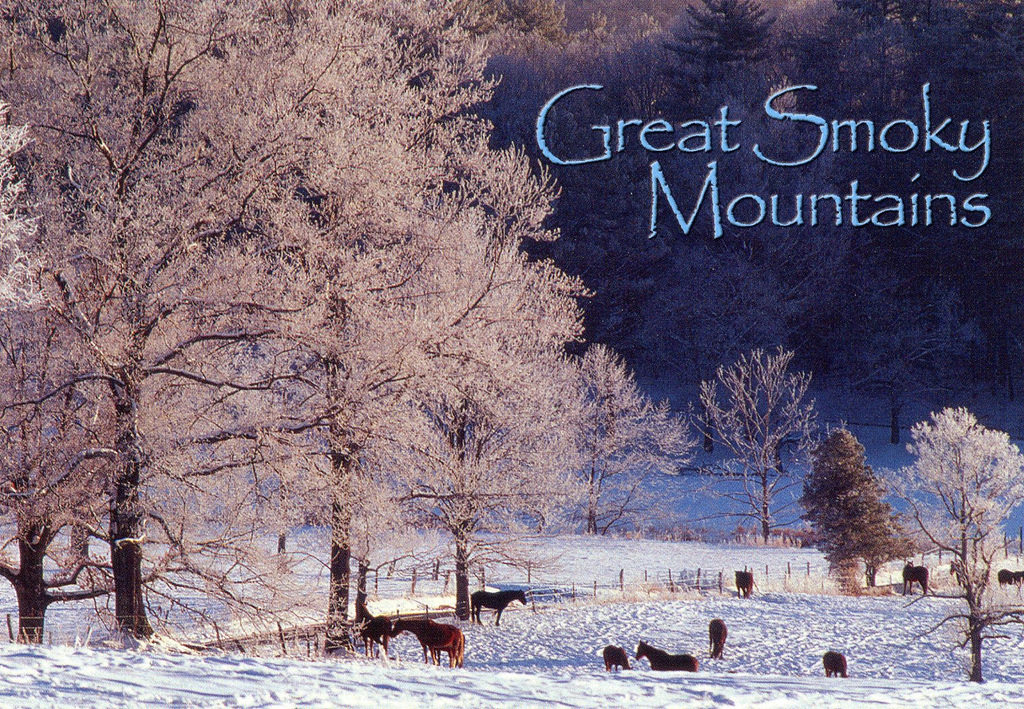 If you’ve visited the Smoky Mountains National Park area in the summer, spring or fall, then you know it can get a little crowded here. That’s why you should consider a getaway during the wintertime. You’ll find fewer visitors and traffic, enjoy clearer views of the landscape, and even enjoy some sunny days in the crisp winter air. You can also enjoy our Great Winter Escape at a great price. Take advantage of this great 25% discount package– two nights of lodging, breakfasts on two mornings, and dinners on two nights. All for $320 for a traditional room or $385 for a cottage or premier room.
If you’ve visited the Smoky Mountains National Park area in the summer, spring or fall, then you know it can get a little crowded here. That’s why you should consider a getaway during the wintertime. You’ll find fewer visitors and traffic, enjoy clearer views of the landscape, and even enjoy some sunny days in the crisp winter air. You can also enjoy our Great Winter Escape at a great price. Take advantage of this great 25% discount package– two nights of lodging, breakfasts on two mornings, and dinners on two nights. All for $320 for a traditional room or $385 for a cottage or premier room.
Great Winter Hiking on Amazing Trails Alum Cave is the most popular winter hiking trail in the Smokies. At the bluff you can see beautiful frozen icicles and breathtaking mountain views. Other great winter hiking trails include Charlies Bunion, Andrews Bald and the Little River Trail. And our own Porter’s Creek—just a stone’s throw from Buckhorn—offers easy walking along the river or a more challenging climb to Ramsey Cascades.
Take a Drive through the Mountains In the winter, the mountaintops are covered in a beautiful white dusting of snow. There’s nothing prettier than the view from Cades Cove Loop in the winter with its snowy landscapes across wide open fields. If you are lucky, you might see a few white-tailed deer. But you may also glimpse otter, bob-cat, red fox, mink, red squirrel.
Moonshine, Whiskey and Wine Take a stroll down Gatlinburg’s main street and get a free taste of the locally made moonshine, whiskey and wine. One of the best places to visit is Ole Smoky Moonshine because it offers great rocking chairs and live bluegrass music.
Go Skiing at Ober Gatlinburg Gatlinburg is home to a favorite attraction – Ober Gatlinburg. Along with indoor ice skating, an alpine slide, restaurants, and an arcade, it also offers skiing, snowboarding, and tubing! Kids can learn at the ski school, and there is even a terrain park for the more adventurous boarders!
Shop ‘Til You Drop Avoid the crowds and shop the great Five Oaks Shopping Mall this winter with its more than 100 stores. Explore the beloved Christmas Place with its over-the-top supply of everything Christmas and enjoy its January sales. Check out the Smoky Mountains Arts and Crafts Loop at our front door.
Explore History Glenn Cardwell Heritage Museum celebrates the heritage and culture of the people of the small mountain town of Pittman Center. Find out about the area’s first settler, a veteran of the American Revolutionary War, who arrived in 1784, and the migration of people who were forced to leave their homes when the National Park was established in the 1930s.
Waddle with the Penguins Take a stroll through Ripley’s Aquarium in downtown Gatlinburg where you can splash with rays, sleep with the sharks and take a ride in a glass-bottom boat. The latest exciting exhibit focuses on Pearl Harbor.
Renew Your Spirit in the Serenity of Buckhorn Inn For many of us life can be a rush. Slow down with a quiet dinner for two in our dining room overlooking the Smokies, read a book in front of a fire, enjoy a massage, take a nap in the afternoon, or reflect on life with your partner.
November 20, 2017
We Are Thankful for the Buckhorn Family
We are so pleased that many of our long-time guests refer to themselves as part of the “Buckhorn Family”! When John and I purchased the Buckhorn, we expected to provide travelers with a respite from the rush of everyday life, and an opportunity to renew their spirits in the tranquility of nature’s bounty. What has delighted us most is that we also are providing a place for family and friends to connect and celebrate each other. Nothing pleases us more than to have a couple or a group announce to us that this is their 5th, or 12th, or 27th visit to the Buckhorn!
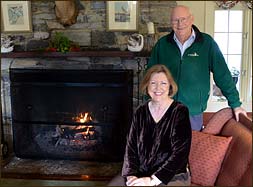
Over the last 20 years, Lee and John Mellor have added many wonderful guests to the Buckhorn Family.
Comments from Buckhorn Family Members
We gathered many comments from guests in the book The Buckhorn Experience”. Here is a sampling:
“The fireplace is the perfect backdrop for a cozy opportunity to chat with newly-made friends.” Cyndy
“We are sitting here tonight watching the fire, with a good wine. Everything here is peaceful. Why would you want to be anywhere else? This is and always will be my favorite place to stay.” Cindy and Lamar
“Our ninth visit is as memorable as ever. As my wife said to Lee, the Buckhorn trip is not like going away, it is like coming home!” Philip and Judy
“We do not leave this place behind, for in our hearts, we will always carry the love and beauty we found here.” Babe
“Our 12th trip to the Buckhorn was just as wonderful as the others. We look forward to returning next fall!” Grady and Cindy
“We have been coming here so long, we can’t agree just how many times we’ve been here!” June
“We celebrated our 35th wedding anniversary here with four other couples who have also been married for 35 years. Just as good as it was 10 years ago when we were all here for our 25th!” Mel and Bobbie
“There’s magic here. It’s subtle. Worries and fears slip off like ill-fitted garments.” Suzan
“Every time I go to the Buckhorn Inn, I always come away with new friends. I don’t go to the Buckhorn to get friends. I have plenty already. But these are special friends, who have shared the Buckhorn experience.” Douglas
Thank you to all our wonderful guests for being part of the Buckhorn family. We wish you a joyous Thanksgiving!
November 13, 2017
Dessert Is Always a Guest-Favorite at Buckhorn Inn
Guests tell us that dessert is a highlight of any Buckhorn Inn dinner. And why not! With such delights as coconut cream pie, apple-cranberry crisp, and our special “that” chocolate cake, all dinners end on a sweet note. But have you ever wondered about the history of dessert?
How Dessert Came to Be
Ancient peoples enjoyed dried fruits and nuts candied with honey. However it was not until the production of sugar that sweet dishes became popular parts of a meal. Sugar was expensive, so sweet treats were reserved, for the most part, for the wealthy and special occasions.
In Medieval Europe, sweet and savory dishes were served alongside each other. It was not until the 1600’s that service a la francaise (serving all dishes at once) became replaced with service a la russe (serving one course after another) and sweets claimed their place as the final course of a meal.
It was at that time that the word “dessert” came into popular use. The word comes from the French word “dessirvir” which means “to clear the table”. In other words, desserts were served after the table was cleared of main dishes. For more information on some of your favorite meal-enders, visit http://www.history.com/news/hungry-history/category/desserts
The recipe for one of our guest-favorites appears below. Enjoy!
Brown Butter Almond Torte with Sour Cherry Sauce
Torte
1/2 cup unsalted butter
1 tsp vanilla
1 cup blanched almonds
1/2 cup AP flour
1 cup sugar
3/4 tsp salt
6 large egg whites
1/3 cup sliced almonds
Preheat oven to 375 F. Butter and flour a 9″ round cake pan. Melt butter over moderately low heat. Continue to cook until golden brown with a nutlike fragrance. Cool and then stir in vanilla. In a food processor finely grind blanched almonds with flour, 2/3 c. sugar, and 1/2 tsp salt. With an electric mixer beat egg whites and remaining 1/4 tsp salt until they hold soft peaks. Gradually add remaining 1/3 cup sugar, beating until meringue holds stiff peaks. Fold in almond mixture. Then fold in butter mixture. Batter will deflate. Spread batter into cake pan and top with sliced almonds. Bake 35-40 minutes until tester comes out clean. Cool in pan on a rack 15 minutes. Remove from pan and cool completely.
Sour Cherry Sauce
3 cups sour cherries, pitted. (about 1 1/2 lbs.)
1/2 cup sugar
1/2 cup water
1 tsp cornstarch
Bring cherries, sugar and water to a boil. In a cup stir together cornstarch and 1 tablespoon water until dissolved. Stir into cherry mixture. Simmer sauce 2 minutes and cool to room temperature. This recipe makes 6-8 servings.
October 29, 2017
Halloween Happenings at Buckhorn Inn
We love celebrating holidays at the Buckhorn Inn–and Halloween is no exception! Innkeeper Lee Mellor recently conducted a pumpkin carving workshop for our guests. They made some amazing Jack-o-lanterns!
Have you ever wondered from where the tradition of pumpkin-carving came?
A Brief History of Halloween Jack-o-lanterns
It all began with an Irish folktale. The tale revolves around Stingy Jack, who fooled the devil twice. When he eventually died, he was too dishonest to go to Heaven. But the devil had been tricked into promising not to claim his soul. The devil sent him away from the gates of Hell with a single burning coal to light his way. Ever resourceful, Jack carved out a turnip to use as a lantern. In Ireland and England, children would put burning embers in carved turnips, beets, gourds, or potatoes and used them to frighten passers-by. The glowing vegetables often were placed by the front door of homes in order to scare away the spirit of Stingy Jack. The use of vegetable lanterns became associated with Samhain, an autumnal Celtic festival that marked the end of the harvest season.
When the Irish, English, and Scots came to the United States, they brought this tradition with them. Pumpkins, native to South America but long cultivated by Native Americans, became the perfect canvas for creating Jack-0-lanterns. In the early 1800’s, the celebration of Samhain was replaced by the Halloween traditions we know today.
If you carve a pumpkin this year, roasted pumpkin seeds make a delicious seasonal snack. You can find a recipe with several variations at http://www.foodnetwork.com/recipes/food-network-kitchen/pumpkin-seeds-recipe-2105941.
Jack-0-lanterns are one of the most common Halloween decorations. In legend they keep away evil spirts or guide lost souls home. But today they serve as a flickering sign of the season.
October 23, 2017
Mount Le Conte is Buckhorn Inn’s Backyard
Rising 6,593 feet, Mount Le Conte accounts for the majestic view from the Buckhorn Inn veranda. It is the highest peak in the Great Smoky Mountains National Park that is entirely within the state of Tennessee. It is the third-highest peak in the national park, behind Clingman’s Dome and Mount Guyot.
Who is Mount Le Conte named after? There is a bit of controversy about that. Joseph Le Conte is listed by the United States Geological Survey as the famous geologist for whom the mountain was named. Others believe the mountain was in fact named for Joseph’s brother, John Le Conte, who was a physicist at South Carolina College. What we do know for sure is that Paul Adams, an enthusiastic hiker, had a major impact on this area. In 1924 he joined the Great Smoky Mountain Conservation Association, whose mission was to make the region into a national park. As part of the campaign Adams led a group of Washington DC dignitaries on a hike up the mountain so that they could appreciate first-hand its rugged beauty. The trip was successful and eventually the entire region became protected as part of the Great Smoky Mountains National Park.
There are five trails that hikers may use to reach the summit of Mount Le Conte. They are the Alum Cave, Boulevard, Bullhead, Rainbow Falls, and Trillium Gap Trails. Millions of years of erosion and weathering have given Mount Le Conte its gently sloping shape. It is composed largely of sandstone, siltstone, and shale that was formed hundreds of millions of years ago. One remnant of the Ice Age can be seen today–a dense stand of Southern Appalachian Spruce-Fir Forest blankets the upper slopes.
Lodging at the Top of Mount Le Conte
The Le Conte Lodge, established in 1925, is the inn with the highest elevation in the eastern United States. Guests may only access the lodge by hiking. Its inaccessibility means that supplies are brought to the lodge by llama train and helicopter. http://www.lecontelodge.com
During your next visit to the Buckhorn Inn we encourage you to appreciate Mount Le Conte, whether that means hiking to the summit or enjoying the view, spiced tea in hand, from one of our veranda rocking chairs.
October 16, 2017
Fall Color in the Great Smoky Mountains
Guests often ask us when is the best time to see the beautiful fall color in the Great Smoky Mountains. Our honest answer: “It depends”! Fall color timing depends on a wide variety of variables, making peak times impossible to predict.
We do know, however, that the autumnal hues light up the landscape for as long as seven weeks each year. The colors begin first in the higher elevations, then gradually move downward. Adding to this extended show is the fact that the Smokies are home to more than 100 varieties of native trees, most of them deciduous.
Most years the displays in the very highest elevations may be seen as early as mid-September, with colors visible from Clingman’s Dome Road. The colors in the middle and lower elevations can peak anywhere from mid-October through mid-November. According to http://www.gatlinburg.com/event/autumn-color-in-the-smokies, visitors can expect to enjoy beautiful colors from sugar maples, scarlet oak, sweet gum trees, red maples, and the hickories.
What Causes the Fall Color Change?
Cooler temperatures and longer nights cause the green pigment in the leaves to deteriorate. Carotenoids, the pigments that makes the leaves yellow (and carrots orange!) become more prominent. Red and purple colors come from anthocyanins. This pigments are formed when leaf sugars break down in bright sunlight.
We recommend the Roaring Forks Motor Nature Trail and the Blue Ridge Parkway as being especially scenic drives this time of year. The National Park Service http://www.nps.gov/grsm/planyourvisit/fall-suggestions recommends the following fall hikes: Appalachian Trail, Inspiration Point on Alum Cave Trail, Oconaluftee River Trail, Look Rock Tower, and Sutton Ridge Overlook.
Whether you have made your Great Smoky Mountain trip plans for this year, or are looking forward to 2018, remember that the fall color season typically lasts from mid-September through early November. This is a busy time of year, so we advise making your travel plans far in advance. Feel free to check with us at the Buckhorn Inn periodically–we sometimes have cancellations and then you can book accommodation with short lead times. Our dining room fills up quickly this time of year, so we encourage you to make your dinner reservations early. And don’t forget that Buckhorn Inn guests can pre-order hearty sack lunches to enjoy on a scenic drive or beautiful hike.
Happy fall!
October 9, 2017
Comments from our Guests
We were so happy to meet guests James and Cheryl Nipper this September. The Nippers were first-time
Buckhorn Inn visitors from Jacksonville, FL and were so warm and friendly.
He is an attorney, but we suspect also a photographer because he took some great shots of the Inn. James described the Inn as “laid-back, quaint, all-Southern”. We were so flattered when he said the Inn reminds him of what he sees in Southern Living! We actually have been in the magazine several times. Here is a “throwback” recommendation on our dining room from 2008! http://southernliving.com/travel/south-central/cozy-cabin-getaway-two
Guests Enjoy Buckhorn Grounds
The Nippers especially enjoyed the view of Mount LeConte from their room, and pointed out that it is the highest point in the Smoky Mountains that is fully situated in Tennessee. They walked the Buckhorn Inn Nature Trail and took some great photos of the pond. James says the scene reminds him of the movie “On Golden Pond”. He was kind enough to give us permission to share some of the great photos they took at the Buckhorn Inn. We are sharing them with no filters or special effects–we think they are gorgeous “as is”! We look forward to the Nippers’ next visit and in the meantime, please enjoy their photos.
Share Your Buckhorn Experience
We love seeing and sharing photos taken by our guests. Please send them by email to [email protected] along with a few descriptive comments. If you are on Instagram, please tag @innbuckhorn. Seeing the property through the eyes of our guests often gives us a brand new appreciation and perspective!
October 2, 2017
Carp-e Diem! New Denizens of Buckhorn Pond
Have you visited Buckhorn Pond? The spring-fed pond was created after Douglas Bebb built a dam there in the early 1950’s. The pond was designed with an ingenious overflow to protect the dam during heavy rains. Bass, carp and perch make their home here, as well as frogs, turtles and a few snakes. The brilliantly-colored wood duck, spotted sandpiper, heron, and other water fowl are attracted here.
We are responsible caretakers of our property, and invited a representative from the Tennessee Department of Natural Resources to review Buckhorn Pond and provide advice. He told us that our water and surrounding area is in excellent shape! His only recommendation was that a species of carp, the grass carp, could help us more easily maintain optimum levels of water plants.
Grass Carp Released in Pond
Our research revealed that the local farmers’ co-op is visited about once a month by a truck selling live fish. We went there on “fish truck day” and purchased six 12″-long triploid grass carp. The size was important as the naturalist told us if they were too small they could be eaten by the bass, and if they were done growing, they would not eat many water plants.
Innkeeper John and daughter-in-law Sharon took the large plastic bags filled with water and carp down to the pier. They “tempered” the fish by adding water from the pond to the bags until the temperatures equaled. Then they lowered the bags into the water and let the fish swim out. They report the fish looked happy in their new home!
The grass carp is a large, herbivorous, fresh-water fish. It is used as a food fish in China, but in the United States and Europe used mainly for controlling aquatic weeds. The use of these fishy friends lessens use of herbicides. The fish live up to 11 years and eat three times their weight in vegetation daily. They grow rapidly, as much as 10 inches in a summer. The average length of a fully-grown grass carp is around 30″. The grass carp are sterile and will not produce young in our pond.
For more information on stocking ponds, visit http://tn.gov/twra/article/fish-for-stocking.



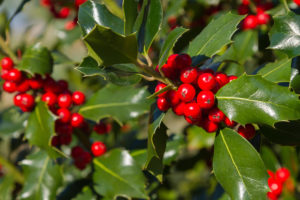
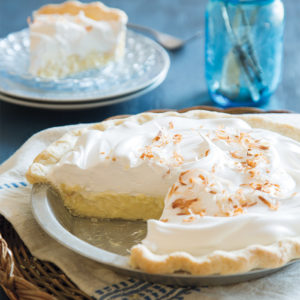
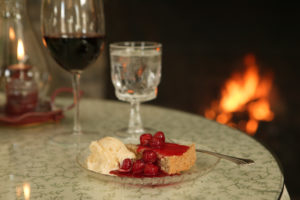
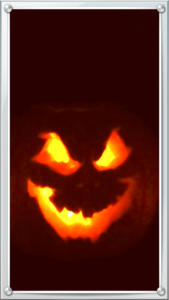

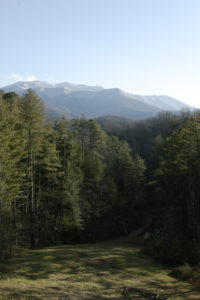
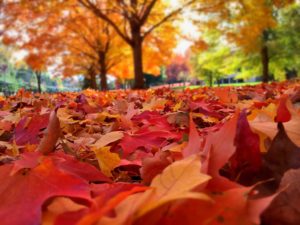

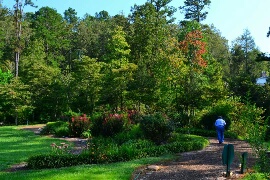
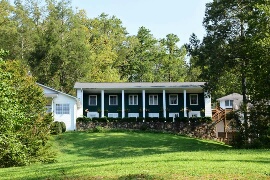
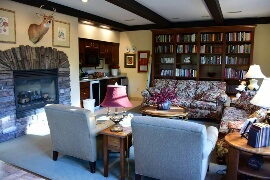

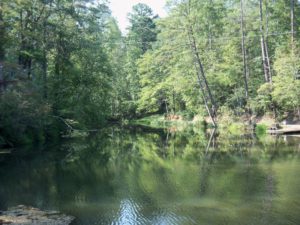


Gatlinburg Weather
Click for weather forecast